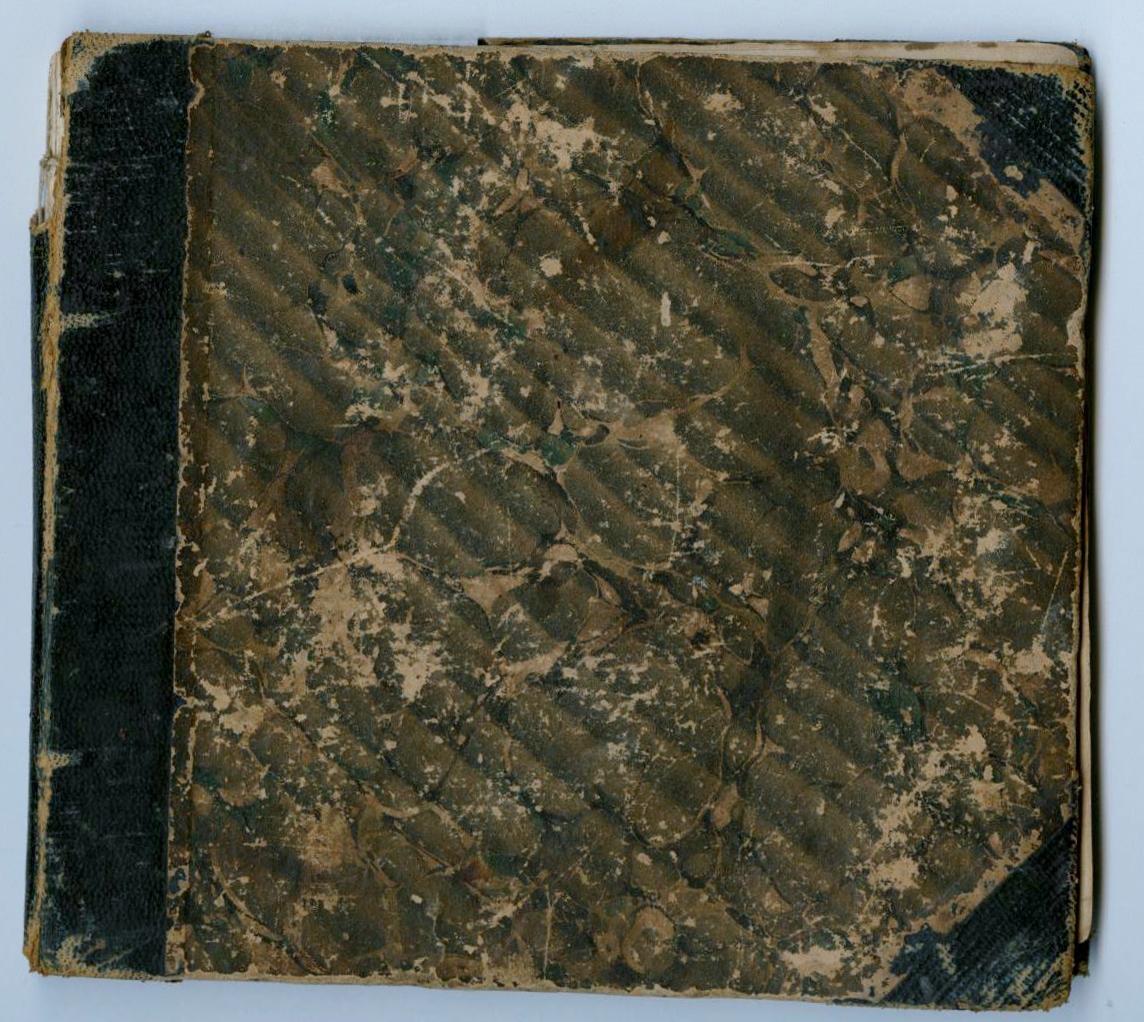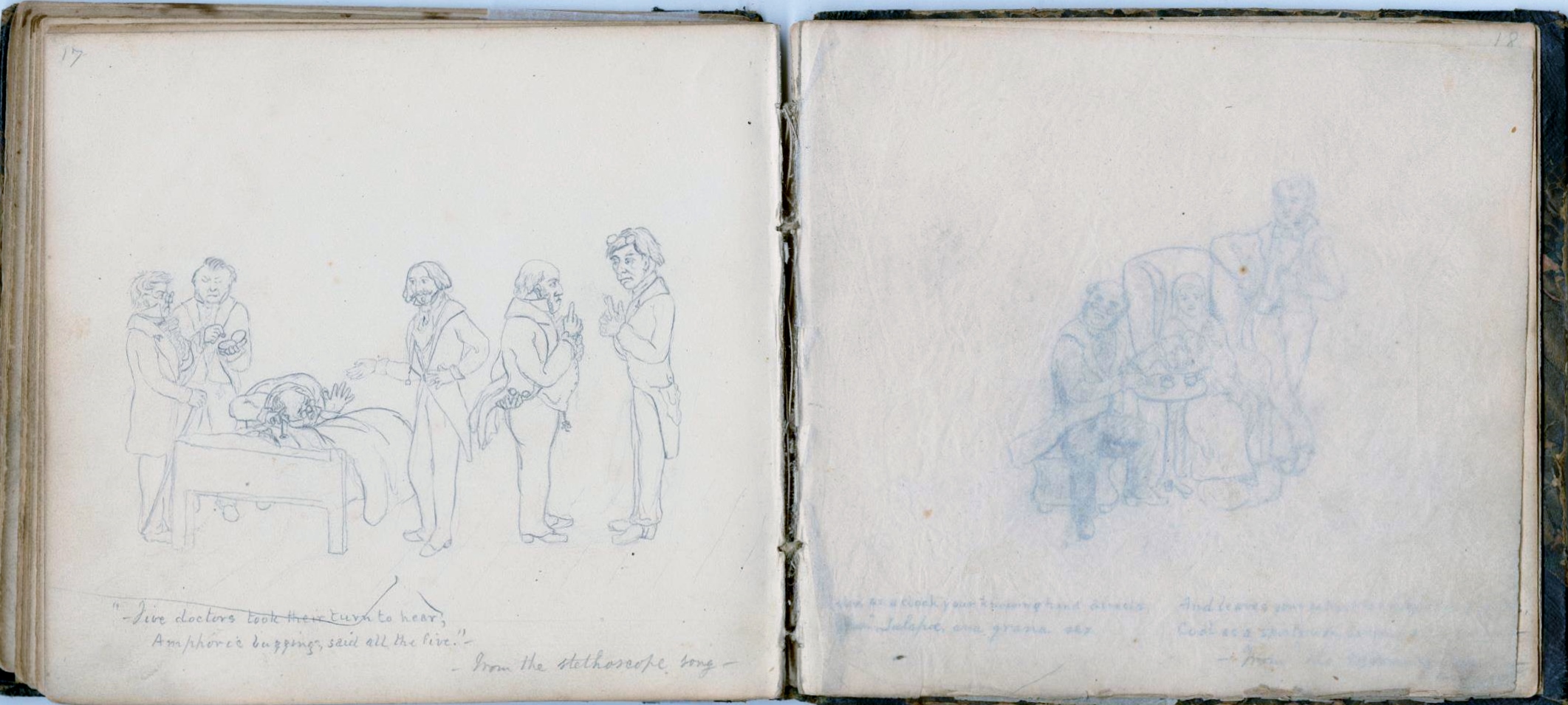By Peter Steinberg, Collection Services
On 30 January 2015, my colleague Dan Hinchen introduced our readers to Eben W. Fiske (1823-1900), a Civil War veteran and librarian as well as a talented amateur illustrator, in his post Ishpeming Illustrators. Dan discussed Fiske’s artwork, which he broke out into two categories: Civil War drawings and other. The Fiske family papers (Ms. N-1227) also contains letters and compositions, as well as several volumes containing original pencil drawings.
Recently I was asked to review the collection to determine whether any of the drawings might be worth including in a forthcoming web project. I pulled Box 3, which houses “Volumes 3-6: E.W. Fiske writings, drawings,” from the shelves. Volumes 3 and 4 contain newspaper clippings; volume 5 is a notebook with writings on the Bible. The folder with the intricate drawings was labeled “Volume 6: Pencil drawings. Illustrations to ?”.

The small sketch book, measuring 16.2 cm x 17.8 cm, features highly detailed scenes that correspond to text that Fiske puts in quotes. Curious about the quotes, I learned from Dan’s prior blog post that Fiske drew in response to the poem “On Lending a Punch Bowl” by Oliver Wendell Holmes, Sr. As other poems are quoted and illustrated, I searched for word strings in Google and was happy to discover most of the works from which Fiske drew inspiration. Here is a list of the groupings of drawings:
Pages 1-4 respond to the poem “On Lending a Punch Bowl” by the physician and poet (among other things) Oliver Wendell Holmes, Sr. (1809-1894);
Pages 5-12 illustrate (pun!) Holmes’s “A Song: For the Centennial Celebration of Harvard College, 1836”;
Pages 13-16 react to a lecture given at the Mercantile Library Association;
Page 17 draws on (pun, again!) Holmes’s “The Stethoscope Song”; and
Page 18 takes inspiration from Holmes’s “The Morning Visit”.

There are also a few unfinished sketches and two instances where drawings were tipped in between pages.

Responding to a work of art using another form of art is called ekphrasis. It is most commonly seen when a poem is inspired by a work of art. See, for example, Sylvia Plath’s poems “Conversation Among the Ruins (1956) and “The Disquieting Muses” (1958) and Giorgio de Chirico’s paintings by the same names (the former1927 and the latter1916-1918). Those are just two examples; and it appears the term is flexible enough to include Fiske’s reactions to the poems of Oliver Wendell Holmes, Sr.
While there currently is no finding aid to the Fiske family papers, please do not let that stop you from coming into the MHS to enjoy the collection.

